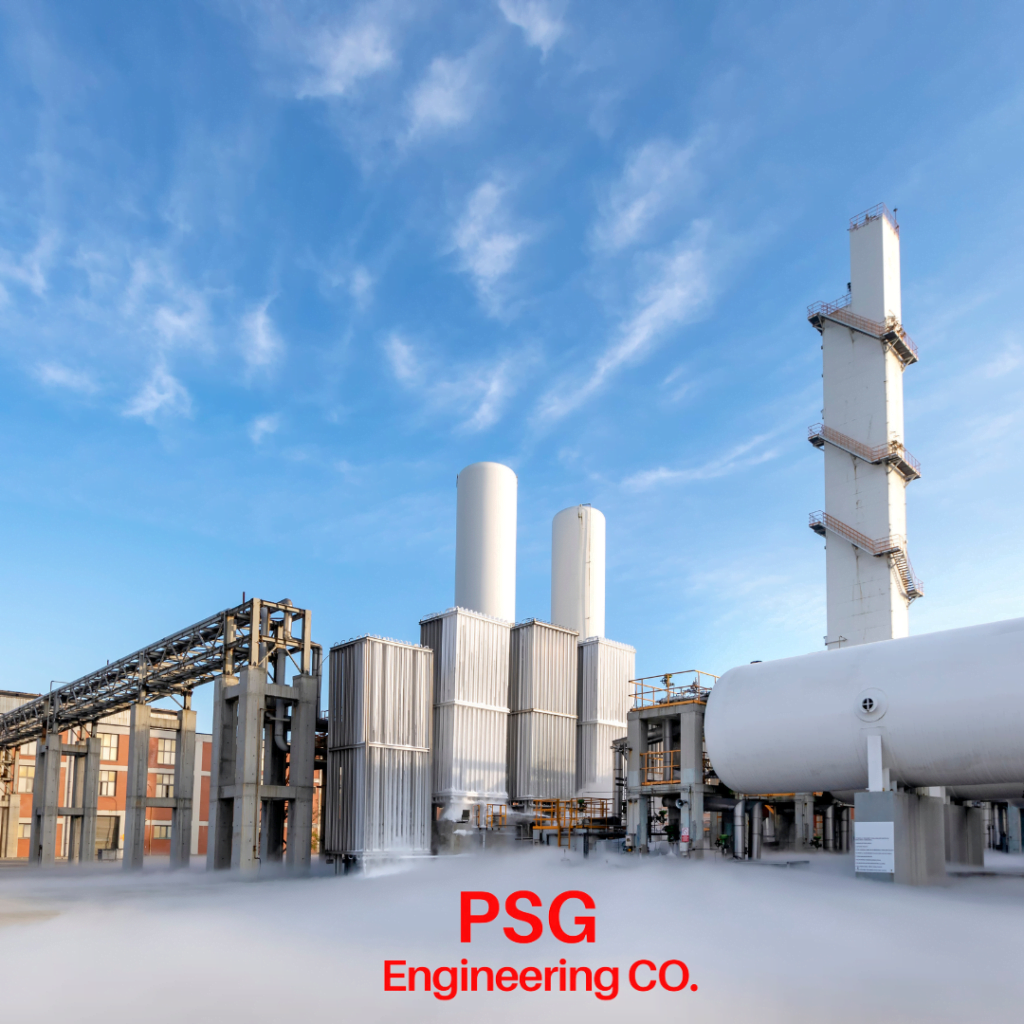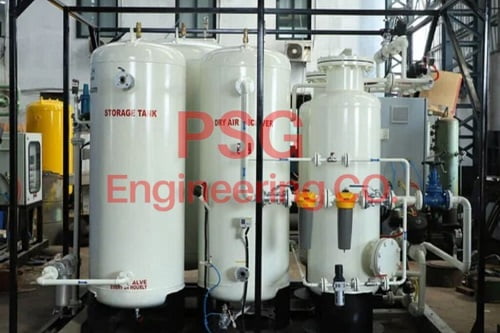How PSA Oxygen Plant Works
How PSA Oxygen Plant Works Call Now How PSA Oxygen Plant Works: A Detailed Overview by PSG Engineering Company Pressure Swing Adsorption (PSA) oxygen plants are a critical technology for producing high-purity oxygen on demand. At PSG Engineering Company, we specialize in designing and manufacturing state-of-the-art PSA oxygen plants that efficiently meet the needs of various industries, including healthcare, steel manufacturing, and water treatment. The PSA Process Explained The PSA process is based on the principle of selective adsorption. Atmospheric air, which contains about 21% oxygen and 78% nitrogen, is the raw material for oxygen production. The PSA oxygen plant utilizes two towers filled with a specialized adsorbent material called Zeolite. Zeolite has the unique ability to adsorb nitrogen molecules under high pressure while allowing oxygen to pass through. Here’s how the process works: Air Compression and Purification: Ambient air is first compressed using an air compressor. The compressed air then passes through filters to remove dust, moisture, and other impurities, ensuring that only clean air enters the PSA system. Adsorption: The purified air is directed into the first tower, where nitrogen is adsorbed by the zeolite at high pressure. This allows oxygen to pass through the tower and be collected as the product gas. This step continues until the adsorbent in the first tower becomes saturated with nitrogen. Desorption and Regeneration: Once the first tower is saturated, the airflow is switched to the second tower. The pressure in the first tower is then reduced, causing the Zeolite to release the adsorbed nitrogen, which is vented out. This regeneration process prepares the tower for the next cycle. Continuous Operation: The PSA oxygen plant operates continuously by alternating between the two towers, ensuring a steady supply of high-purity oxygen. Why Choose PSG Engineering Company? PSG Engineering Company is committed to delivering reliable and efficient PSA oxygen plants that meet stringent industry standards. Our expertise ensures that you receive a system that is not only high-performing but also energy-efficient and cost-effective. For more information on how PSA oxygen plants can benefit your operations, contact PSG Engineering Company today.
What are the Benefits of Oxygen Gas Plants?

What are the Benefits of Oxygen Gas Plants? Call Now Oxygen Gas Plants are becoming increasingly important in many areas of our lives. They provide a steady supply of oxygen for various uses, from hospitals to industrial factories. But what exactly makes these plants so beneficial? In this blog, we’ll break down the key advantages of oxygen gas plants in a simple and easy-to-understand way. What is an Oxygen Gas Plant? An oxygen gas plant is a specialized facility that generates oxygen gas from the air. The primary goal of these plants is to produce high-purity oxygen that can be used in different sectors such as healthcare, industry, and research. The process involves separating oxygen from other gases in the air, primarily nitrogen, using various technologies. Benefits of Oxygen Gas Plant 1. Improved Medical Care Oxygen gas plants play a crucial role in healthcare. Here’s how: Medical Treatments: Hospitals need a reliable supply of oxygen for treating patients with breathing problems, like asthma or COPD. Oxygen helps doctors deliver better care and manage emergencies. Surgical Procedures: During surgeries, oxygen is essential for anesthesia and patient safety. Oxygen gas plants ensure that hospitals have a constant supply. By providing a steady flow of high-quality oxygen, these plants help save lives and improve patient outcomes. 2. Boost to Industrial Processes Industries use oxygen in many ways. Oxygen gas plants help boost efficiency in: Steel Production: Oxygen helps make the steel production process more efficient and environmentally friendly by improving combustion in furnaces. Chemical Manufacturing: Many chemicals are made using oxygen. With a reliable supply, manufacturers can produce these chemicals more efficiently. Water Treatment: Oxygen helps break down pollutants in water treatment plants, making processes cleaner and more effective. By ensuring a constant supply of oxygen, these plants help industries run smoothly and reduce waste. 3. Environmental Benefits Oxygen gas plants also support the environment: Reduced Emissions: Using pure oxygen instead of air in industrial processes can cut down on harmful emissions, helping to protect the environment. Cleaner Water: In water treatment, oxygen helps break down pollutants, leading to cleaner rivers and lakes. By optimizing oxygen use, these plants help reduce pollution and support environmental health. 4. Economic Advantages There are several economic benefits to having an oxygen gas plant: Lower Costs: Producing oxygen on-site is often cheaper than buying and transporting it from elsewhere. This can lead to significant savings for businesses. Efficient Operations: Having a reliable supply of oxygen means fewer disruptions and downtime, which can improve productivity and reduce costs. In the long run, oxygen gas plants can be a smart financial investment for many businesses. 5. Support for Technology and Innovation Oxygen gas plants are essential for various high-tech applications: Space Exploration: Oxygen is crucial for rockets and space missions. Plants that produce oxygen help support these exciting ventures. Scientific Research: Researchers need oxygen for experiments and developing new technologies, from energy solutions to environmental science. By providing a reliable supply, oxygen gas plants support technological advancements and scientific progress. 6. Flexibility and Customization Oxygen gas plants can be adjusted to meet specific needs: Tailored Production: Whether a small clinic or a large factory, plants can customize the amount and purity of oxygen they produce to fit different requirements. This flexibility ensures that every application gets the right amount of oxygen, enhancing overall effectiveness. Conclusion Oxygen gas plants offer many benefits, from improving healthcare and boosting industrial efficiency to supporting environmental sustainability and technological innovation. Their ability to provide a steady, reliable supply of oxygen makes them essential for modern life. Whether in a hospital, factory, or research lab, oxygen gas plants play a key role in keeping things running smoothly and efficiently.
What is an Oxygen Gas Plant?

An oxygen gas plant is a facility designed for the production of oxygen gas through various methods such as cryogenic distillation, pressure swing adsorption (PSA), or vacuum pressure swing adsorption (VPSA). These plants are engineered to separate oxygen from other components of air, such as nitrogen and argon, to obtain high-purity oxygen gas suitable for specific applications.
